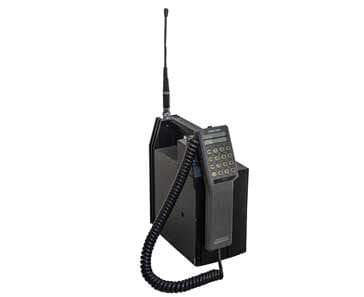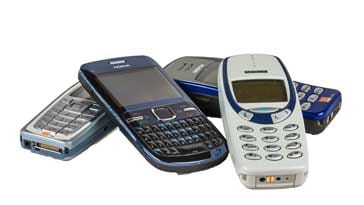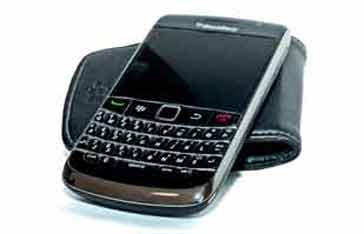Vintage, Classic, & Old Mobile Phones
Since the first mobile phones or cellphones were introduced their looking at the history and examples of the old mobile phones reflected the way that mobile communications technology has developed.
History of Mobile Phones Includes:
Cellular telecommunications history
Cell phone systems table
Vintage & classic mobile phones
GSM history
UMTS history
5G history & timeline
History of Blackberry & Research in Motion, RIM
Over the years, many thousands of different mobile phone or cellphone types have been manufactured. Some of these have become classic vintage mobile phones.
Looking at these classic vintage phones, some might just say they are old mobile phones, it is possible to see how the industry has developed. In itself it shows a history of mobile phone technology.
The first mobile phones were large phones with a carrying handle and a cord to a landline style handset. Now phones are multifunctional and more of a personal communications hub.
The style of the mobile phones available at various times shows how their usage has changed. Some were groundbreaking and paved the way for the technology we know today, whereas others tried new ideas which were soon overtaken and sometimes the phones were forgotten.
Early analogue phones
When the first mobile phone systems started to be launched in the 1980s, the technology that was used revolved around the use of analogue techniques including the use of frequency modulation.
There were several different systems that were used, TACS, AMPS, and the like and this meant that each country had their own system. Roaming was definitely not on the agenda in these days.
The styles of these vintage mobile phones varied quite considerably. Some were used as car installations and were often referred to as carphones. The use of the car battery solved the issue of the high current consumption and relatively early battery technology used.

Some of these old mobile phones were contained in a hand carry case with a handle, and a separate cored handset, similar to those used for landline phones. These were definitely not something you could slip into a pocket, and they weighed a lot in comparison to many later ones.
As the technology developed, the cellphones did become smaller, but the technology used remained analogue and very basic by today's standards. Nevertheless demand for the phones grew, especially as they became easier to carry and use.
One of the main issues with the use of the 1G phones was that of security. When these services were first used, there were many stories that appeared in the newspapers of revelations about famous people that had been obtained by unscrupulous people listening to the FM signals. These could easily be monitored using scanner receivers that were widely available.
With the concept well proven by the first generation services and mobile phones, the second generation services and phones were developed and launched.
2G phones
There were several 2G technologies that were launched and these included cdmaOne, US Digital Cellular, PDC and more. However the one that gained the most acceptance world wide was GSM.

GSM had a number of unique features apart from being digital so that listening in to the calls was not possible. It introduced the concept of the SIM card that enabled people to change their phones without the need to change their numbers. Roaming between countries was also possible and there were many other advantages.
Some while after GSM was first introduced, the possibility of sending text messages was introduced - this was a feature that was first trialled in 1991 and soon caught on in a big way. This capability resulted in some later 2G phones even having a small keyboard.
The first 2G phones to hit the market were obviously larger than some of the later ones, but they were nevertheless became smaller and the functionality increased - some eventually having small cameras for both stills and even low resolution video.
Even though the technology had progressed considerably, these phones still seem to be old by current day standards.
The Blackberry
The phone that was to change the way people thought of their phone was introduced by a little known Canadian company called Research In Motion, RIM.
RIM had seen that people could use their phones for far more applications, especially as 3G was being introduced and this gave far more data capabilities than the previous upgrades to 2G was able.

With this in mind, RIM introduced a phone they named the Blackberry. It had a screen to display messages and pictures and it had a keyboard to enable people to type messages.
The Blackberry was far more than a phone and whilst it was fine for making calls, the shift to using a "user equipment" as a personal organiser, email application and many other applications had started.
The Blackberry had paved the way for what we call a smartphone today.
Rise of the smartphone
Although mobile phones had started out as just that: a phone that was mobile and linked to the cellular network, with the increase in data capabilities of the networks, really of 3G and beyond, as well as the significant increases in the levels of integration, phones started to become used less as phones and more as a highly integrated organiser, music player, games console, video viewer, internet browser and very much more.
The name smartphone indicates the fact that they incorporate a considerable amount of processing and they can be considered as "smart", providing a whole lot more functionality over that of a basic phone for making and receiving calls.
In terms of a definition of a smartphone, it is intersting to note that the International Telecommunication Union measures the devices with Internet connection, which it calls Active Mobile-Broadband subscriptions (which includes tablets, etc.). This could be taken as a broad indication of what a smartphone might be - at least it defines what is being counted when statistics are given.
Despite their huge level of functionality, smartphones often are considered to be relatively boring in terms of their appearance. They all tend to follow a very similar pattern with a front screen that is black for most of the time to conserve the battery and the main "block" of the phone that might have a few connector ports, although the number of these is being reduced as the number of wireless connections increases.
Vintage mobile phone index
There are very many different vintage phones, classic phones, etc. Over the years, the phones have changed their shape and size and most of them can now be slipped into a pocket with relative ease.
In order to index these classic vintage phones, the table below categorises them by the date of their launch.
As the list of these old phones increases, this seemed the most logical way of undertaking this.
| List of Classic Vintage Mobile Phones by Launch Year |
|
|---|---|
| Parameter | Details |
| 1983 | Motorola Dynatec 8000X |
| 1985 | Mobira (Nokia) VT1 Talkman |
| 1989 | NEC MP5B2D2 |
| 1997 | Maxon MX-3204 (Vodafone MN1) |
| 1999 | Nokia 3210 Bosch COM608 |
| 2000 | Nokia 3310 |
| 2001 | Nokia 8310 |
| 2003 | Nokia 7250 / 7250i0 |
| 2004 | Nokia 3120 Motorola Razr V3 Nokia 7710 |
| 2007 | Nokia 3110 classic |
| 2010 | Nokia C3-00 Samsung GT-E1150 |
| 2011 | Motorola Gleam (clamshell) |
| 2012 | Blackberry 9320 |
| 2013 | Blackberry 9720 |
These classic mobile phones may seem to be old, but it is interesting to note that some have been updated and re-introduced to provide a retro phone. Many of the old Nokia phones as well as some others have undergone this treatment and these new 'old' phones are now relatively widely available.
Looking at these classic phones shows how far mobile phone technology has developed since it was first available in the 1980s.
 Written by Ian Poole .
Written by Ian Poole .
Experienced electronics engineer and author.
More History:
Radio history timeline
History of the radio
Ham radio history
Coherer
Crystal radio
Magnetic detector
Spark transmitter
Morse telegraph
Valve / tube history
PN junction diode invention
Transistor
Integrated circuit
Quartz crystals
Classic radios
Mobile telecoms history
Vintage mobile phones
Return to History menu . . .



